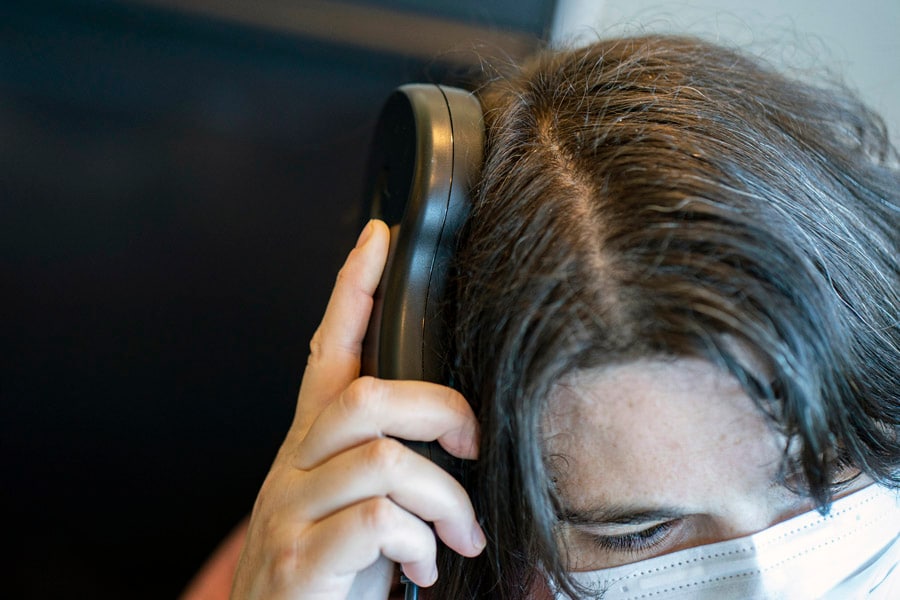
A 'pacemaker for the brain': No treatment helped her depression—until this
Deep brain stimulation is used to treat Parkinson's disease and several other disorders, but isn't approved by federal regulators for depression because results have been inconsistent
 Sarah, who asked not to be fully identified, uses a magnet to download her brain activity from a device that detects when she is becoming depressed and delivers bursts of electrical stimulation at her home on Sept. 21, 2021. Her case raises the possibility the method may help people who don’t respond to other therapies. (Ruth Fremson/The New York Times)
Sarah, who asked not to be fully identified, uses a magnet to download her brain activity from a device that detects when she is becoming depressed and delivers bursts of electrical stimulation at her home on Sept. 21, 2021. Her case raises the possibility the method may help people who don’t respond to other therapies. (Ruth Fremson/The New York Times)
Driving home from work in Northern California five years ago, a young woman was so overwhelmed with depression that all she could think about was ending her life.
“I couldn’t stop crying,” recalled Sarah, now 38. “The thought that consumed me the entire way on that road was just driving my car into the marshland so I can drown.”
She made it home but moved in with her parents soon after because doctors considered it unsafe for her to live alone. No longer able to function at work, she quit her health technology job.
She tried nearly every treatment: roughly 20 medications, months in a hospital day program, electroconvulsive therapy, transcranial magnetic stimulation. But as with nearly one-third of the more than 250 million people with depression worldwide, her symptoms persisted.
Then Sarah became the first participant in an unusual study of an experimental therapy. Now, her depression is so manageable that she’s taking data analysis classes, has moved to her own place and helps care for her mother, who suffered a fall.
©2019 New York Times News Service







